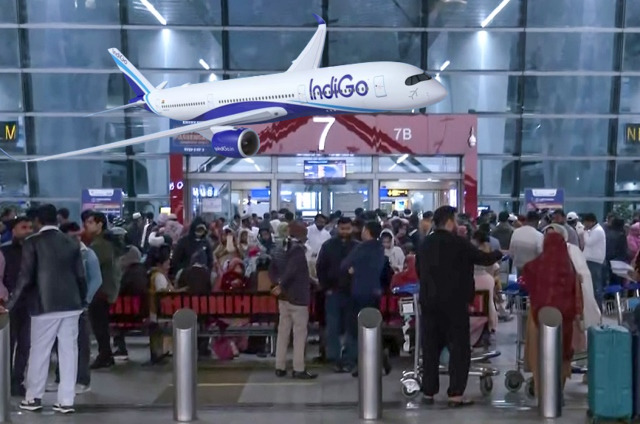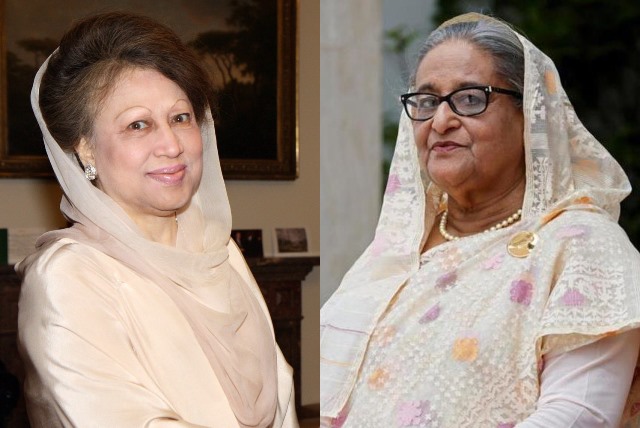
Manipur Crisis Has Roots In Colonial Push For Evangelism-I
This is the first section of a two-part series on the subject:
Following the British colonial era, Manipur has witnessed several ethnic conflicts, including uprisings led by the Naga and Kuki tribes against the colonial authorities. The dispute in Manipur is not only about race; it is a tinderbox created by decades of evangelical endeavours that is currently being used by international forces eager to establish a tactical footing in the region. In this article, we shall find out how the roots of Manipur crisis go back to the evangelical push in the north-eastern parts of India during and after the British Raj and are part of a larger game plan.
Several theories have been circulating, for some time, about the West involvement into the present crises in Bangladesh and Manipur. A review of the statements made by Sheikh Hasina, the former prime minister of Bangladesh, a few months ago also highlights this submission. On May 23, 2024, Hasina wrote that she had received a proposal from “a white person” to allow his country to establish an army base in Bangladesh, with the assurance that she “wouldn’t have to fear about the upcoming election in January” if she granted the request. According to her, there was also a plan to establish “a Christian state, like East Timor… by means of taking components of Bangladesh (Chattogram) and Myanmar, with a base in the Bay of Bengal.” This plan, in accordance with her, additionally covered components of Mizoram, Manipur, and different North-eastern states of India.
There has been speculation in social media that the US is in search for a foothold in this region, allegedly, by facilitating an impartial Christian ‘Zo’ state. This nation would incorporate areas of Bangladesh, Myanmar, Manipur and Mizoram, inhabited by way of the Christian Kuki-Chin-Mizo people. Establishing a Christian-majority state in a largely non-Christian zone would supply a strategic stronghold for the West in Southeast Asia.
Additionally, it is noteworthy that certain sections of the Kuki populace are closely worried about poppy cultivation and drug trafficking from Myanmar. Currently, the identical Christian Kukis, many of whom are unlawful immigrants from Myanmar into Manipur, are in conflict with the native Meitei community, which is predominantly Hindu. It is believed that with the fall of Hasina, there were efforts to return the Christian Kukis, helping them establish a base and setting up a drug trafficking zone between India, Bangladesh, and Myanmar. This is precisely what Hasina had warned about.
The Conversion of Northeast India to Christianity
Involvement of the US in the Northeast components of India is no longer a current development, having started a long way lower back in the nineteenth century. One of the predominant troubles in the Northeast these days is the rampant Christian conversions through Western evangelists, which have persisted unabated when you consider the nineteenth century. This has considerably altered the demographics and socio-political panorama of at least three Northeast states—Mizoram, Nagaland, and Meghalaya—since India’s independence. Manipur, as soon as a predominantly Hindu-Sanamahi state, now has a Christian populace of forty-one per cent, up from eight per cent in 1931. While there are giant populations of Hindus in city areas, the hilly components of Manipur are now usually Christianised.
The Christian conversion threat entered northeast India around 1870, with the arrival of British and American evangelists, however the conversions had been gradual at that time. While British missionaries subsequently gave up after encountering difficulties, American missionaries were relentless, persevering in their efforts to convert the nearby population. These proselytization efforts had been generally carried out by way of imparting the so-called “superior Western structure of education” via missionary colleges and via introducing Western standards of ‘feminism’ amongst tribal women, which aimed at doing away with them from their age-old standard roles. Owing to the chronic efforts, by 1931, the Christian populace in the Northeast states rose to around fifteen percent.
Conversions have been chiefly done by imparting unique privileges and advantages to tribe individuals who transformed to Christianity, benefits that have been denied to non-Christians. These new converts, seeing the advantages, remained loyal to the British authorities for their obtain and did no longer take part in the Indian nationalist movement. The British government, in turn, extended its funding to Christian missionaries to speed up the conversion method in the Northeastern components of India.
However, prior to the beginning of World War II, British and American impact in the Northeast weakened, and besides political backing, the missionaries had been quickly pressured to leave. As a result, the Northeast skilled a mild decline in Christianity between 1931 and 1941. However, matters rapidly changed, and the Nineteen Forties and Fifties noticed a substantial surge in the unfolding of Christianity in Northeast India. During this period, Mizoram grew to be ninety per cent Christian, whilst Nagaland grew to be forty-six per cent Christian.
The two primary drivers for this unanticipated development of Christianity are as follows:
• The first purpose used to be the arrival of the American Southern Baptist Church, which is extraordinarily fanatic in its conversion methods. This church, which adheres carefully to the unique structure of Christianity, is the equal church that presently exists in Tamil Nadu and Andhra Pradesh, conducting mass conversion programmes.
• The second purpose was Jawaharlal Nehru who facilitated the speedy Christianisation of the Northeast after Independence. In 1942, Britain’s Sir Reginald Coupland arrived in India to make certain that the missionary reach in the Northeastern states remained uninterrupted and that proselytization would proceed to keep the loyalty of contributors of the ‘crown colony.’ It was once at this time that Coupland deliberated a separate condo comprising the Northeast states of India and Burma, which had loyal Christian tribal hill people, and Nehru agreed.
So, after Independence, a state of affairs arose that placed tribal rights in the Northeast states have been intentionally neglected and grew to become non-existent whilst overseas evangelists had been given free rein. Missionaries grew to be Nehru’s “advisors,” and he observed their orders. One identity that wishes a different point out right here is that of Dr Verrier Elwin, a Christian evangelist masquerading as an “anthropological advisor” to Nehru. Verrier and Nehru interestingly signed a settlement that disallowed Hindu sadhus from coming into Nagaland.
Read the Second Part Here
Prosenjit’s article is a well researched one with conclusions drawn from thorough analyses. A remarkable point he has made is the eroding away of the values, traditions, religious rituals etc of the indigenous natives after embracing christianity. Hats off to the writer ! Waiting for the part to follow.



